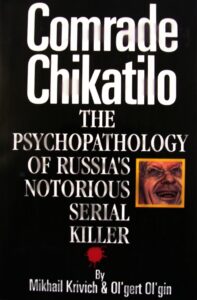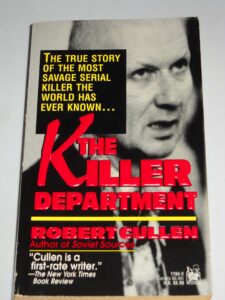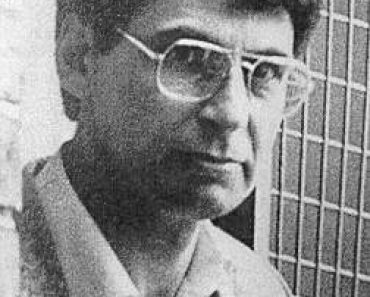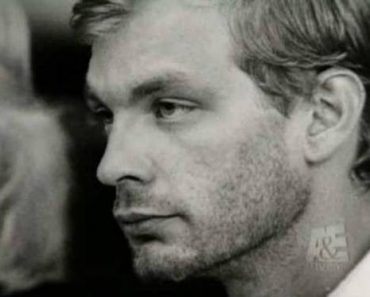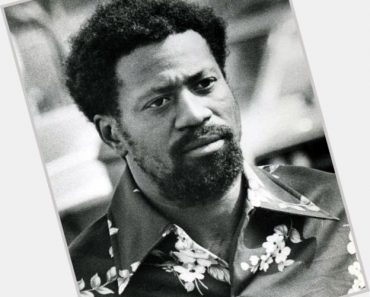Andrei Chikatilo | Russian Serial Killer
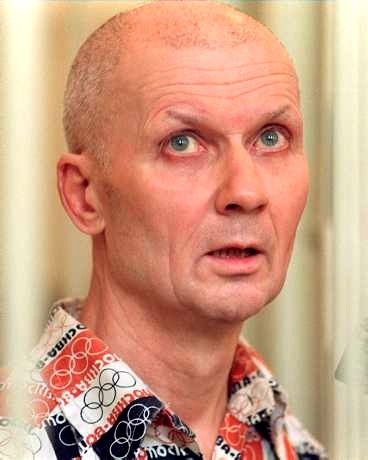
Andrei Chikatilo
Born: 10-16-1936
The Cannibal of Russia
Russian Serial Killer
Crime Spree: 1978 – 1990
Execution by Shooting 02-14-1994
Andrei Romanovich Chikatilo was born on October 16, 1936 in Yablochnoye, a village in the heart of rural Ukraine, within the USSR. He confessed to 56 murders when he was eventually caught in 1990. The brutal killer preyed on children and young vagrants, eating intimate parts of their bodies.
Biography of Andrei Chikatilo
During the 1930’s, the Ukraine was known as the “Breadbasket” of the Soviet Union, and the policies of communism, realized through Stalin’s enforcement of agricultural collectivization, caused widespread hardship within the country. This eventually led to a famine that decimated the population. At the time of his birth, the effects of the famine were still widely felt and his early childhood was influenced by this deprivation.
In addition to the external hardships, Andrei Chikatilo is believed to have suffered from hydrocephalus (water on the brain) at birth, which caused him genital-urinary tract problems later in life, including bed-wetting into his late adolescence and, later, the inability to sustain an erection, although he was able to ejaculate.
His home life was disrupted by his father’s conscription into the war against Germany, where he was captured, held prisoner, and then vilified by his countrymen for allowing himself to be captured, when he finally returned home. Such was the political control exercised in the Soviet Union at that time that the young Chikatilo suffered the consequences of his father’s “cowardice”, making him the focus of constant bullying.
Andrei Chikatilo
Andrei Chikatilo, who was also painfully shy, had his only sexual experience during adolescence at age 15, when he is reported to have overpowered a young girl, ejaculating immediately during the brief struggle, for which he received even more ridicule. This humiliation colored all future sexual experiences and cemented his association of sex with violence.
Andrei Chikatilo failed his entrance exam to Moscow State University, and a spell of National Service was followed by a move to Rodionovo-Nesvetayevsky, a town near Rostov, in 1960, where he became a telephone engineer.
His younger sister moved in with him and, concerned by his lack of success with the opposite sex, she engineered a meeting with a local girl, Fayina, whom he went on to marry in 1963. Despite his sexual problems, and lack of interest in conventional sex, they produced two children, and lived an outwardly normal family life.
In 1971, a career change to school teacher was short-lived, when a string of complaints about indecent assaults on young children forced him to move from school to school, before he finally settled at a mining school in Shakhty, near Rostov.
The Crimes of Andrei Chikatilo
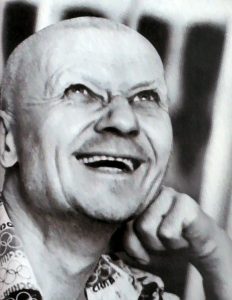
On December 22, 1978, Andrei Chikatilo killed his first documented victim; 9 year old Lena Zakotnova. The little girl was lured into an abandoned shed, where Chikatilo tried to rape her. Trying to control the struggling child, Chikatilo slashed her with a knife, ejaculating while doing so, confirming his psychological connection between violent death and sexual gratification that went on to typify all of his future attacks.
An eyewitness had seen Chikatilo with the victim, shortly before her disappearance, but his wife provided him with a cast-iron alibi that enabled him to evade any further police attention.
A 25-year old, Alexsandr Kravchenko, with a previous rape conviction, was arrested and confessed to the crime under duress, probably as a result of extensive and brutal interrogation. He was tried for the killing of Lena Zakotnova, and executed (wrongly of course) in 1984.
Calm before the Storm
Perhaps as a result of his close brush with the law, there were no more documented victims for the next three years. Still dogged by claims of child abuse, Andrei Chikatilo found it impossible to find another teaching post, when he was made redundant from his mining school post, in early 1981. He took a job as a clerk for a raw materials factory in Rostov, where the travel involved with the position gave him unlimited access to a wide range of young victims, over the next 9 years.
On September 3, 1981, Larisa Tkachenko, 17, became his next victim, strangled, stabbed and gagged with earth and leaves, to prevent her crying out. The brutal force afforded Chikatilo his sexual release and he began to develop a pattern of attack that saw him focusing on young runaways of both sexes.
He would befriended them at train stations and bus stops, before luring them into nearby forest areas, where he would attack them, attempt rape and use his knife, as a penis substitute, to mutilate them. In a number of cases he ate the sexual organs or removed other body parts such as the tips of their noses or tongues.
In the earliest cases, the common pattern was to inflict damage to the eye area, slashing across the sockets and removing the eyeballs in many cases, an act which Andrei Chikatilo later attributed to a belief that his victims kept an imprint of his face in their eyes, even after death.
Andrei Chikatilo
At this time serial killers were a virtually unknown phenomenon in the Soviet Union, whether as a result of suppression of information, or wider cultural differences between Soviet and Western societies. Evidence of serial killing, or child abuse, was often suppressed by State-controlled media, in the interests of public order.
The eye mutilation was a modus operandi distinct enough to allow for other cases to be linked, when the Soviet authorities finally admitted that they had a serial killer to contend with. As the body count mounted, rumors of foreign inspired plots, and werewolf attacks, became more prevalent, and public fear and interest grew, despite the lack of any media coverage.

In 1983 Moscow detective, Major Mikhail Fetisov, assumed control of the investigation. He recognized that a serial killer might be on the loose, and assigned a specialist forensic analyst, Victor Burakov, to head the investigation in the Shakhty area.
The investigation centered on known sex offenders, and the mentally ill, but such were the interrogation methods of the local police that they regularly solicited false confessions from prisoners, leaving Burakov skeptical of the majority of these “confessions”.
Progress was slow, because not all of the victim’s bodies had been discovered, so the true body count was unknown to the police. With each body, the forensic evidence mounted, and police were convinced that the killer had the blood type AB, as evidenced by the semen samples collected from a number of crime scenes. Samples of identical grey hair were also retrieved.
The Body Count Rises
When a further 15 victims were added during the course of 1984, police efforts were increased drastically, and they mounted massive surveillance operations that canvassed most local transport hubs. Andrei Chikatilo was arrested for behaving suspiciously at a bus station at this time, but again avoided suspicion on the murder charges, as his blood type did not match the suspect profile, but he was imprisoned for 3 months for a number of minor outstanding offences.
What was not realized at the time was that Chikatilo’s actual blood type, type A, was different to the type found in his other bodily fluids (type AB), as he was a member of a minority group known as “non-secretors”, whose blood type cannot be inferred by anything other than a blood sample. As police only had a sample of semen, and not blood, from the crime scenes, Andrei Chikatilo was able to escape suspicion of murder.
Following his release, Chikatilo found work as a travelling buyer for a train company, based in Novocherkassk, and managed to keep a low profile until August 1985, when he murdered two women in separate incidents.
At around the same time as these murders, Burakov, frustrated at the lack of positive progress, engaged the help of psychiatrist, Alexandr Bukhanovsky, who refined the profile of the killer, describing him as a “necro-sadist”, or someone who achieves sexual gratification from the suffering and death of others.
Bukhanovsky also placed the killer’s age as between 45 and 50, significantly older than had been believed up to that point. Desperate to catch the killer, Burakov even interviewed a serial killer, Anatoly Slivko, shortly before his execution, in an attempt to gain some insight into his elusive serial killer.
More Victims
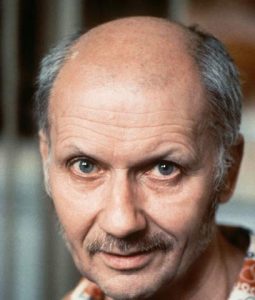
Coinciding with this attempt to understand the mind of the killer, attacks seemed to dry up, and police suspected that their target might have stopped killing, been incarcerated for other crimes, or died. However, early in 1988, Andrei Chikatilo again resumed his killing, the majority occurring away from the Rostov area, and victims were no longer taken from local public transport outlets, as police surveillance of these areas continued.
Over the next two years the body count increased by a further 19 victims, and it appeared that the killer was taking increasing risks, focusing primarily on young boys, and often killing in public places where the risk of detection was far higher.
The recently unfettered media of Gorbachev’s Glasnost society placed enormous public pressure on police forces to catch the killer, and general police patrols were stepped up, with Burakov targeting likely areas with undercover police in an attempt to flush out the killer.
Andrei Chikatilo evaded capture narrowly, on a couple of occasions, but on November 6, 1990, fresh from killing his final victim, Sveta Korostik, his suspicious behavior was noted by patrolling policemen at the station nearby, and his details were taken. His name was linked to his previous arrest in 1984, and he was placed under surveillance.
The Arrest of Andrei Chikatilo
Andrei Chikatilo was arrested on November 20, 1990, following more suspicious behavior, but he refused at first to confess to any of the killings. Burakov decided to allow the psychiatrist, Bukhanovski, who had prepared the original profile, to talk to Chikatilo, under the guise of trying to understand the mind of a killer from a scientific context.
Andrei Chikatilo, clearly flattered by this approach, opened up to the psychiatrist, providing extensive details of all of his killings, and even leading police to the site of bodies previously undiscovered.
Andrei Chikatilo claimed to have taken the lives of 56 victims, although only 53 of these could be independently verified. This figure was far in excess of the 36 cases that the police had initially attributed to their serial killer.
The Trial
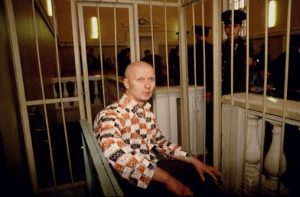
Having been declared sane and fit to stand trial, Andrei Chikatilo went to court on April 14, 1992, and throughout the trial he was held in an iron cage designed to keep him apart from the relatives of his many victims.
Referred to in the media as “The Maniac”, his behavior in court ranged from bored to manic, singing and talking gibberish and at one point he was even reported as having dropped his trousers, waving his genitals at the assembled crowd.
The judge appeared less than impartial, often overruling Chikatilo’s defense lawyer, and it was clear that Chikatilo’s guilt was a foregone conclusion. The trial lasted until August and, surprisingly, given the judge’s bias, the verdict was not announced until two months later, on October 15,1990, when Andrei Chikatilo was found guilty on 52 of the 53 murder charges and sentenced to death for each of the murders.
Andrei Chikatilo was executed by a single gunshot behind the right ear on February 14, 1994.
Source: murderpedia latimes | britannica.com
This site contains affiliate links. We may, at no cost to you, receive a commission for purchases made through these links
WickedWe Suggests:
























































